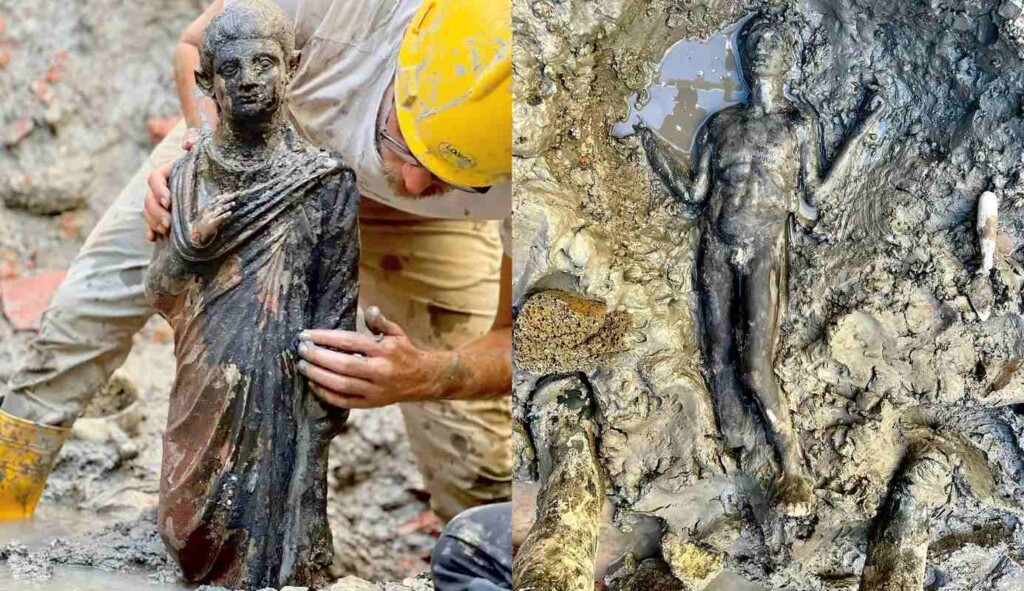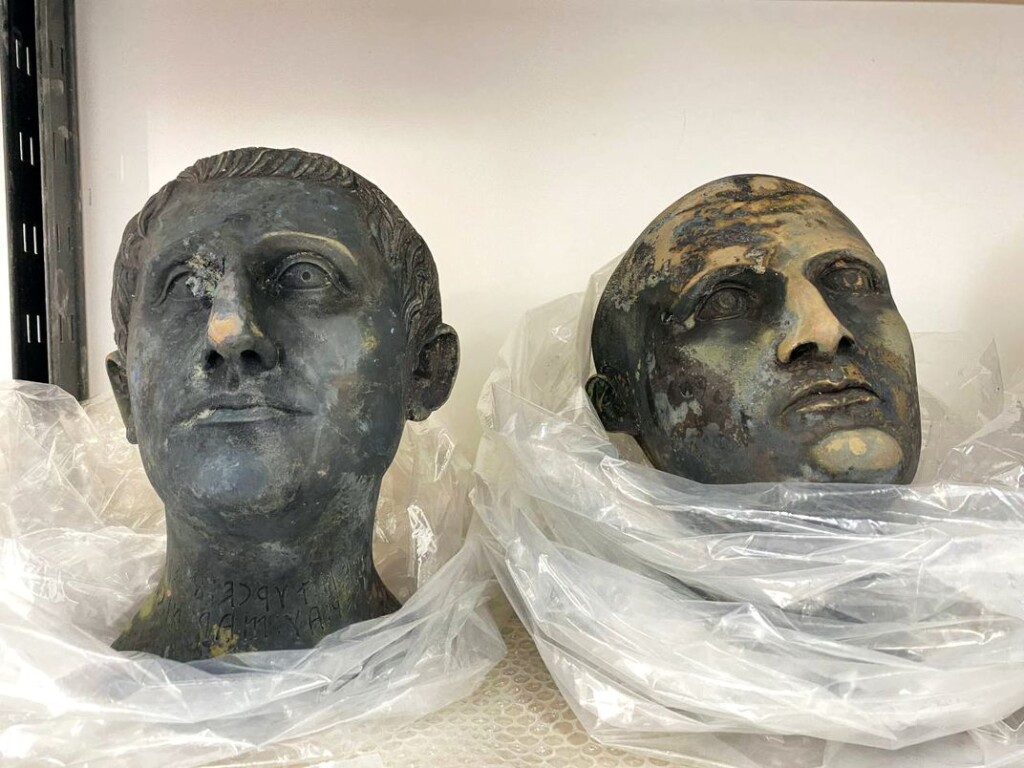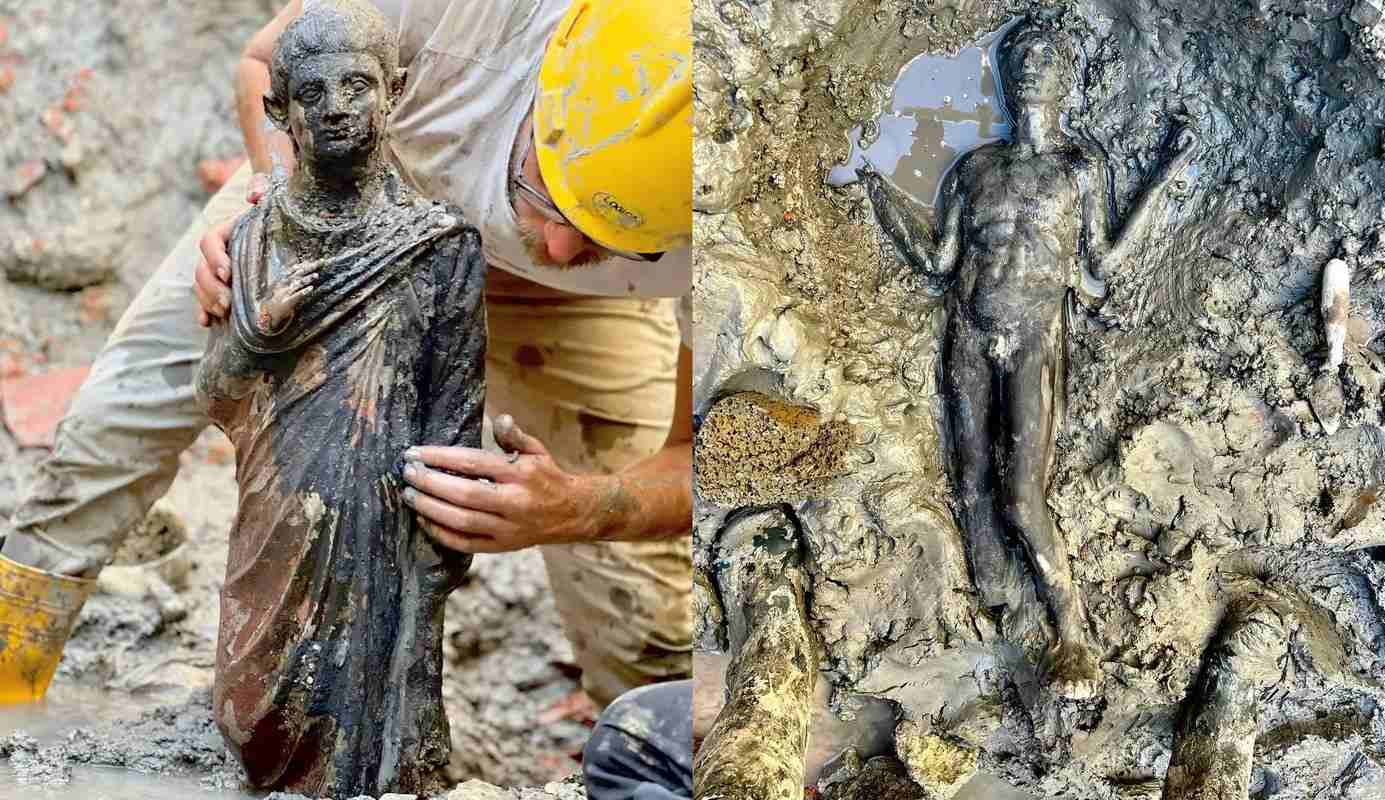
Whilst excavating Roman-era baths in the Tuscan hills outside Siena, archaeologists have stumbled upon what is quite simply one of the most significant discoveries ever found in Italy.
24 bronze statues in perfect condition emerged, sometimes first with a hand, or with a head, from the mud around an area famous for thermal hot springs, along with a hoard of over 5,000 Roman coins in bronze, silver, and even gold.
The incredible statues, which haven’t even turned green with age thanks to the oxygenless environment of the mud, date to the Republican period of the 200s BCE, a time of great upheaval in Tuscany when the Romans were in the process of fully subsuming the Etruscan civilization of the Italian Peninsula which predated them.
The discovery site in the modern town of San Casiano dei Bagni, was once an Etruscan settlement, and the baths were used first by them and by the Romans afterwards until the century of their collapse 600 years later.
The lead excavator, Jacopo Tabolli, a historian at the University for Foreigners in Siena, spared no hyperbole in describing the find—starting by saying it would “rewrite history,” of the Peninsula.
He called it “without equal… the largest deposit of bronze statues of the Etruscan and Roman age ever discovered in Italy and one of the most significant in the whole Mediterranean,” adding that nearly all statuary art from this period is in terracotta.
The statues depict deities like Apollo and Hygieia, a Greek goddess of health first worshiped in Corinth.

The excellent state of the statues has also preserved inscriptions in the Etruscan language and Latin. Some are honors for the gods but there are also the names of important and powerful Etruscan families like the Velimna of Perugia, and the Marcni.
MORE ROMAN DISCOVERIES: Spy Satellite Photos Reveal Hundreds of Long-Lost Roman Forts, Challenging Decades-Old Theory
For the Sindaco, or the mayor of San Casiano dei Bagni, he sees a little more green in the bronzes than the archaeologists.
“This discovery,” he said, “offers San Casciano not only a cultural and touristic opportunity, but a true occasion for rebirth.”
NEWS JUST LIKE THIS: Tiny Italian Town Dug Up an Extremely Rare Roman Temple while Trying to Build Supermarket
“There will be born a new museum, that will host the exceptional statues and an archeo-park; two new places that will, for the town, be a real motor of development and add an enthusiasm to young archaeologists around the world who will come to see and work here.”
Before they can return to the museum, the statues were taken to a preservation center in Grosseto.
SHARE This History Rewriting Discovery With Your Friends Who Love Rome…




















